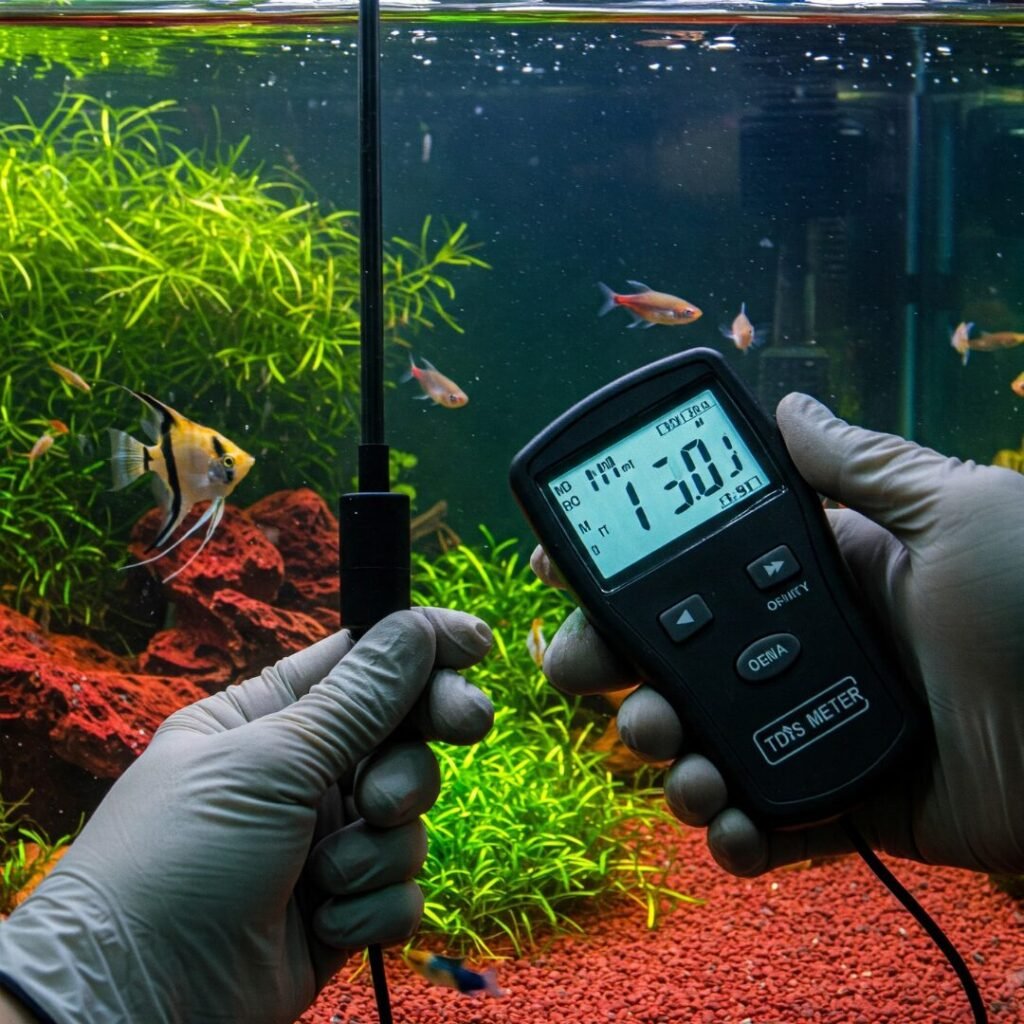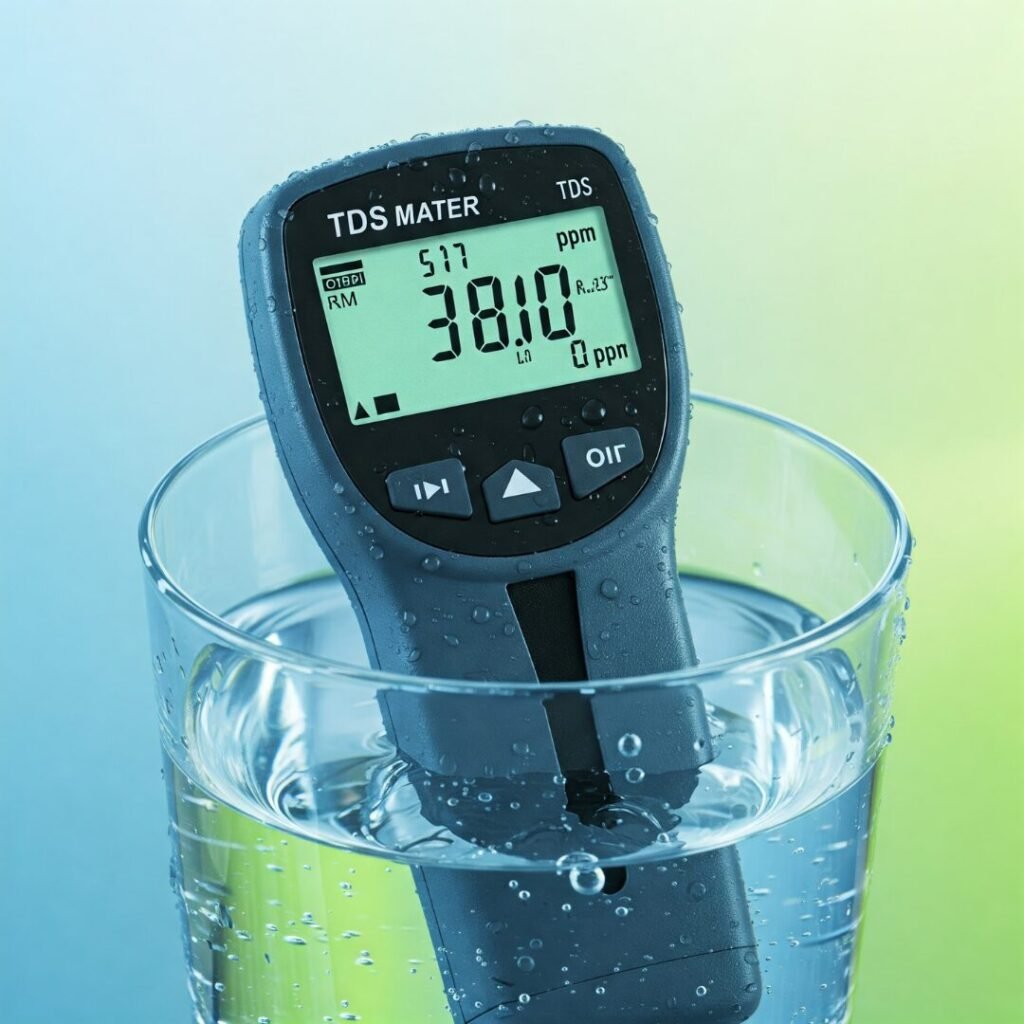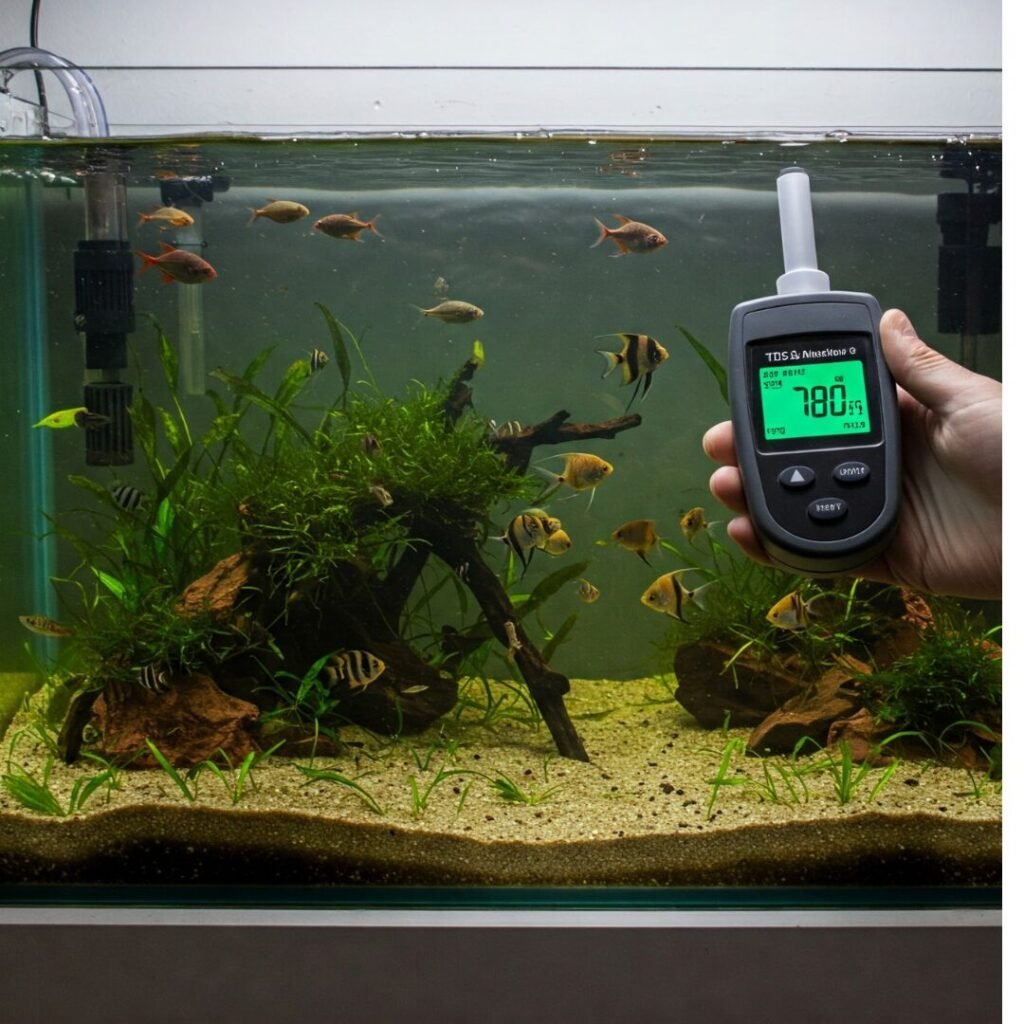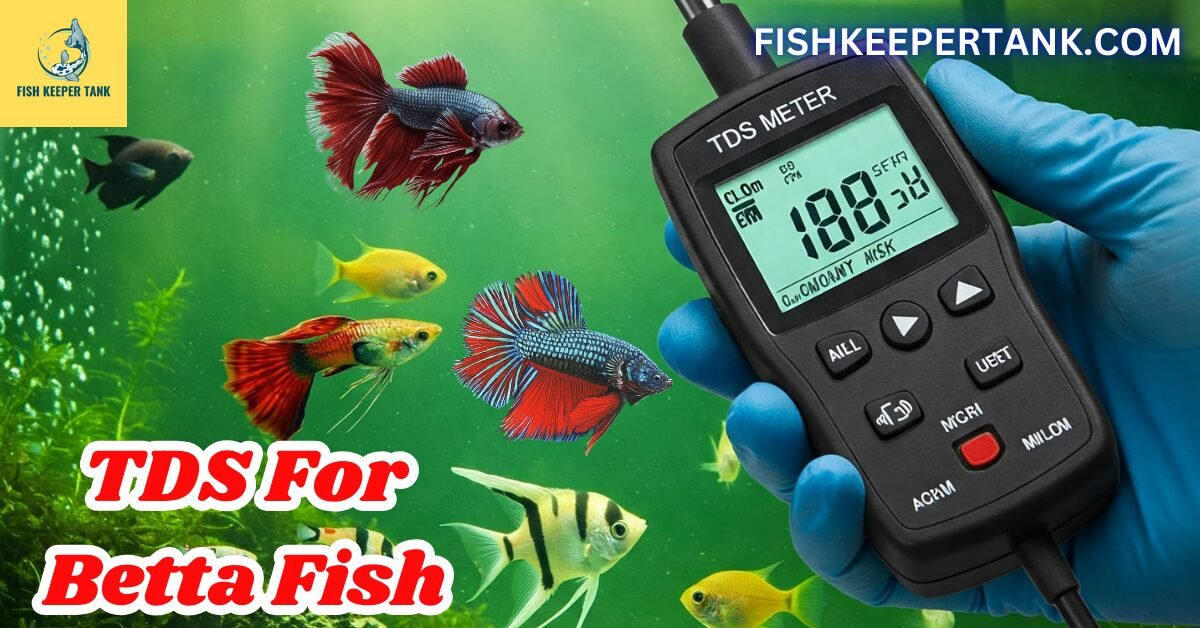Introduction
Betta fish, known for their vibrant colors and flowing fins, are a popular choice for aquarium enthusiasts. However, caring for these beautiful creatures requires understanding various water parameters, including Total Dissolved Solids (TDS). TDS is a critical factor that directly impacts the health and well-being of Betta fish. In this comprehensive guide, “TDS For Betta Fish: Total Dissolved Solids In Betta Fish Tank” we will explore what TDS is, why it matters for Betta fish, how to monitor and adjust it, and other essential tips for maintaining a thriving Betta aquarium.
Key Takeaways
- TDS refers to the total concentration of dissolved substances in water, including minerals, salts, and organic matter.
- Maintaining optimal TDS levels is crucial for the health and longevity of Betta fish.
- Regular monitoring and adjusting of TDS can prevent health issues like stress, weakened immunity, and diseases in Betta fish.

Betta Fish Habitat
In The Wild:
Betta fish, also known as Siamese fighting fish, are native to Southeast Asia, and primarily found in Thailand, Cambodia, Laos, and Vietnam. Wild Betts choose to live within the gentle waters of rice paddies along with ditches and marshes. These environments are typically warm, slightly acidic, and have low TDS levels. The natural habitat provides Betta fish with plenty of hiding spots and access to insect larvae and small invertebrates, their primary food sources.
- Low TDS: Rainwater and dense vegetation filter impurities.
- Soft, acidic water: pH 6.0–7.0 due to decomposing organic matter.
- Stable temperatures: 75–80°F (24–27°C). Betta Fish Water Temperature: The Essential Guide
In Captivity:
In captivity, Betta fish are often kept in aquariums ranging from small bowls to larger, well-filtered tanks. The controlled environment means that water quality, including TDS levels, needs to be carefully monitored to mimic their natural habitat. Betta fish thrive in water with a TDS range of 50 to 150 ppm (parts per million). The best health outcomes for Betta fish stem from water measurement within the specified 50 to 150 ppm TDS range so regular tests alongside maintenance activities become essential.
- Tanks ≥5 gallons (prevents rapid TDS buildup).
- Planted aquatic tanks act as natural filters when they absorb extra minerals and provide a habitat that duplicates the natural environment.
Understanding Total Dissolved Solids (TDS)
TDS measures the combined content of all inorganic and organic substances dissolved in water. TDS consists of all accumulated minerals along with salts metals and organic compounds. The TDS level is measured in parts per million (ppm) and provides an overall picture of the water quality in an aquarium.
Components of TDS:
- Inorganic Salts: Calcium, magnesium, potassium, and sodium.
- The water Contains Two Divisions: Organic components including plant remains fish waste and other particles from food.
- Chemical Additives: Water conditioners, medications, and fertilizers.
Maintaining appropriate TDS levels ensures a stable environment, reduces stress, and enhances the overall health of Betta fish.
|
Symptoms |
Treatment Options |
Prevention Tips |
|
Lethargy |
Gradually increase TDS levels through proper mineral supplementation. |
Regularly test water parameters using an accurate testing kit. |
|
Poor appetite |
Provide a varied diet rich in essential nutrients. |
Avoid overfeeding and ensure that uneaten food is removed from the tank daily. |
|
Ragged fins |
Maintain good water quality through regular partial water changes. |
Clean the tank regularly and use a good quality filter. |
|
Skin inflammation or ulcers |
Use an appropriate medication recommended by a veterinarian. |
Handle fish carefully when performing routine maintenance tasks to avoid injury or stress. |
Importance of Monitoring TDS Levels for Betta Fish
Monitoring TDS levels is essential for creating a safe and comfortable environment for Betta fish. Elevated TDS can result from excess waste, overfeeding, or improper water changes, leading to harmful conditions. Conversely, low TDS can indicate insufficient minerals and a lack of essential nutrients, which are vital for fish health.
Benefits of Monitoring TDS:
- Ensures a stable environment for Betta fish.
- The monitoring of TDS prevents both fish stress and the subsequent health problems it causes.
- The treatment response becomes more powerful after monitoring this measurement.
- Supports healthy growth and coloration. Betta Fish Turning White
- Regularly testing TDS levels can help identify issues early, allowing for timely adjustments and ensuring your Betta fish remains healthy and vibrant.
Symptoms and Effects of High TDS Levels
High TDS levels can have detrimental effects on Betta fish, as the excessive concentration of dissolved substances can stress their delicate systems.
Symptoms of High TDS:
- Lethargy and reduced activity.
- Loss of appetite. How Long Can Betta Fish Go Without Food?
- The fish pulls itself into the surface water as it struggles to catch its breath.
- Cloudy or discolored water. Betta Fish New Tank Syndrome
- Increased susceptibility to diseases.
Long-Term Effects:
- Impaired gill function and respiration.
- Stress-induced fin rot or ich. Stress in Betta Fish
- Reduced lifespan and overall health decline
- Addressing high TDS levels promptly is crucial to avoid long-term harm to your Betta fish.
Symptoms and Effects of Low TDS Levels
While high TDS is harmful, levels that are too low can also pose risks for Betta fish. Low TDS indicates a lack of essential minerals and nutrients required for physiological functions.
Symptoms of Low TDS:
- Dull coloration. Betta Fish Turning White
- Slow growth
- Weak immune system
- Fin clamping
- Difficulty in maintaining buoyancy
Long-Term Effects:
- Nutrient deficiencies
- Stunted growth
- Increased susceptibility to infections
Maintaining balanced TDS levels helps Betta fish thrive, ensuring they remain colorful, active, and healthy.
How to Test TDS Levels
Using a TDS Meter
A TDS meter is a simple, cost-effective tool that provides an instant reading of the dissolved solids in your aquarium water. To use:
- Activate the meter and take out the protective cap from the equipment.
- Place the sensor probe deep into the aquarium water.
- Take note of the stabilizing TDS reading before you record the value.
- Compare the reading to the ideal TDS range for Betta fish (50-150 ppm).

How to Test TDS Levels Without Any Equipment
If a TDS meter is unavailable, you can estimate TDS levels by observing the water’s clarity, the health of your fish, and the presence of algae or unusual odors. Regular water replacing a quarter of the tank weekly combined with observing fish movements helps determine aquarium water quality. However, for precise measurement, investing in a TDS meter is recommended.
- Conductivity: Higher TDS = higher conductivity.
- Visual Clues: Unhealthy water quality produces cloudy water, and water haziness along with tank wall mineral deposits.
- Water Change Frequency: Frequent changes suggest high TDS buildup.
Guide To Adjust TDS Levels
Adjusting TDS involves either increasing or decreasing the dissolved substances in the water.
To Lower TDS:
- Change some tank water by replacing it with purified or distilled water. Betta Fish Water Change Guide
- The dilution of tank minerals can be achieved by combining RO water with tap water.
- The removal of water impurities can be achieved through activated carbon filters.
- Anubias and Java Ferns will absorb extra nutrients through your aquarium water thanks to their live plant nature.
- Driftwood undergoes boiling to let loose tannins which help soften water.
- Overfeeding should be limited while all leftover food must be removed as soon as possible. How Long Can Betta Fish Go Without Food?
To Raise TDS:
- You should add either aquarium salts or mineral supplements from Seachem Equilibrium or crushed coral to your tank.
- The appropriate water solution for this process involves water with elevated mineral concentrations.
- The addition of alkaline buffers through Baking soda usage at moderate quantities helps you increase mineral amounts.
- Select driftwood pieces as well as almond foliage to introduce into your system.
Ensuring gradual changes is key to preventing shock in Betta fish. Not more than 10% of TDS change daily.
Maintaining Optimal TDS Levels For Betta Fish
Consistency is vital for maintaining optimal TDS levels. Keeping water stable for the environment requires regular testing together with weekly water changes and adding only minimal chemicals. Additionally, using live plants can naturally regulate TDS by absorbing nitrates and other dissolved substances.
- Weekly Water Changes: Replace 20–30% of water with treated, TDS-matched water. Betta Fish Water Change Guide
- Avoid Overcleaning: Keep the cleaning of filters and substrate at a minimum to protect valuable biofilm from disappearing.
- RO System: Install for long-term control in hard water areas.
Other Water Parameters
While TDS is a crucial factor in Betta fish care, it is only one aspect of overall water quality. It is essential to monitor multiple essential water parameters to create a healthy environment for stress-free Betta fish living conditions.
1. pH Levels:
Betta fish thrive in slightly acidic to neutral water, with an ideal pH range of 6.5 to 7.5. Bettas face stress when pH levels change dramatically resulting in two important diseases: fin rot and fungal infections.
How to Maintain pH Levels:
- When pH levels change it is best to add pH buffers to stabilize the parameters.
- Using Indian almond leaves in the tank water will help lower its pH to more natural levels.
- Using excessive chemical products should be avoided because they can dramatically change the pH balance of water.
2. Temperature:
Betta fish are tropical species and require stable temperatures between 76°F and 82°F (24°C – 28°C). Too low water temperatures make their body fight weaker yet temperatures which are too high create low oxygen concentration.
Tips for Temperature Regulation:
- An aquarium heater serves as an effective method to keep water temperatures steady.
- Placing the tank should be avoided next to windows or air conditioner locations.
- The water temperature should be measured with a thermometer at regular intervals.
3. Ammonia, Nitrites, and Nitrates:
The water contains nitrogen compounds which originate from both fish waste and matter left uneaten as well as decomposing vegetation. High levels can be toxic to Betta fish. Betta Fish New Tank Syndrome
Safe Levels:
- Ammonia: 0 ppm
- Nitrite: 0 ppm
- Nitrate: < 20 ppm
Ways to Control Nitrogen Compounds:
- Perform regular water changes.
- A biological media filter with superior quality should be used.
- To decrease the wastewater the fish receives you must restrict their food portions.
4. Water Hardness (GH & KH):
Water hardness refers to the concentration of dissolved minerals. Betta fish thrive in water with 3-8 dGH general hardness values and 3-5 dKH carbonate hardness levels which should fall between soft to moderately hard.
Adjusting Water Hardness:
- The appropriate methods for achieving soft water include implementing driftwood as well as peat moss or choosing RO (reverse osmosis) water.
- The addition of calcium-based minerals along with crushed coral will harden water.

Tips For Betta Fish Care As a Fish Tank Owner
Owning a Betta fish requires more than just feeding it daily. Providing quality care supports your aquatic companion to enjoy longer and healthier as well as happier life expectancy.
1. Choose the Right Tank Size:
Despite common misconceptions, Betta fish should not be kept in small bowls. A residential fish owner should start their Betta fish tank with at least five gallons of water. Carpets greater than 5 gallons enable longer-term water stability along with superior habitat quality.
2. Use a Good Filtration System:
A soft filter system should be used to eliminate waste products along with bacteria and toxins. Betta fish prefer low-flow filters since strong currents can stress them.
Recommended Filters:
The sponge filter stands out as an excellent filtration solution because it provides tender treatment to Betta tanks.
Users can adjust the flow setting on Hang-on-back (HOB) filters.
Do Betta Fish Need A Filter To Survive?
3. Decorate the Tank Properly:
Betta fish love hiding places and natural decorations that mimic their habitat.
Safe Decorations:
- Live plants like Java fern, Anubias, or Marimo moss balls
- Smooth rocks and driftwood
- Caves or coconut shells
Avoid:
- The fins of tank inhabitants face the risk of injury from strongly decorated items inside tanks.
- Synthetic plant decorations pose potential risks to fish because they might deliver injuries.
4. Feed a Balanced Diet:
Betta fish are carnivorous and require a protein-rich diet. The proper distribution of food in feedings stops malnutrition from developing while maintaining digestive health.
Best Foods for Betta Fish:
- High-quality Betta pellets (main diet)
- Frozen or live foods (brine shrimp, bloodworms, daphnia)
- Occasional treats (but avoid overfeeding)
Feeding Tips:
- Betta fish should receive small portions of their food twice a day.
- Drain all leftover food from the tank after five minutes to preserve the water’s cleanliness.
5. Perform Regular Water Changes:
Washing the tank with fresh water regularly creates the necessary conditions for both the cleanliness and health of your ecosystem. The accumulation of waste together with toxins occurs naturally even with filter usage.
Recommended Water Change Schedule:
- Small tanks (5 gallons): 30-50% water change per week
- Larger tanks (10+ gallons): 20-30% water change per week
You should only use dechlorinated water or water containing a conditioner when removing harmful chemicals that exist in tap water.
6. Monitor Fish Behavior:
You can identify potential health problems of your Betta fish by monitoring their activities each day. The following signs indicate your Betta stratum is healthy:
- Active swimming
- Bright colors
- Healthy appetite
- Responsive to movement
Any unusual behaviors including fin clamping, decreased feeding or constant hiding should be seen as possible signs of either stress or illness.
Conclusion
Total Dissolved Solids (TDS) play a significant role in the health and well-being of Betta fish. Keeping TDS levels within the ideal range of 50-150 ppm helps prevent stress, improves immunity, and enhances the overall vitality of your fish. Proper maintenance of Betta fish requires regular water parameter testing and proper care protocols to build an optimal living space for your pet.
Maintaining tank cleanliness together with proper feeding habits and correct tank maintenance allows your Betta fish to enjoy a healthy and long lifespan as well as vibrant colors. Remember: “A Healthy Betta Is A Happy Betta.”
Frequently Asked Questions
What are some common symptoms of betta fish suffering from high TDS levels?
Symptoms include lethargy, clamped fins, faded colors, difficulty breathing, and increased susceptibility to diseases.
Can TDS levels be too low for betta fish?
Yes, extremely low TDS can lead to a lack of essential minerals, weakening the fish’s immune system and overall health.
How often should TDS levels be tested for betta fish?
Ideally, test TDS levels weekly or whenever water changes are made to ensure a stable environment.
Are there any natural ways to lower TDS levels in a betta fish tank?
Yes, using distilled or RO (reverse osmosis) water, adding live plants, and regular water changes can help lower TDS naturally.
Can high TDS levels in tap water be harmful to betta fish even if they are not in a tank?
Yes, high TDS in untreated tap water can contain harmful minerals and pollutants that may stress or harm betta fish. Always condition tap water before use.
What’s the safest TDS range for Bettas?
50–200 ppm, though gradual acclimation can help them adapt to slightly higher levels.
How often should I test TDS?
Weekly, or after any major tank change (e.g., new decor, water source).
Can I use distilled water to lower TDS?
Yes, but remineralize it with products like Seachem Replenish to avoid nutrient deficiencies.
Does tap water always have high TDS?
Not always—test your tap water first. If TDS exceeds 300 ppm, use RO or bottled spring water.
Can low TDS kill Bettas?
Extremely low TDS (<50 ppm) may weaken their immune system but isn’t immediately lethal.
What is the ideal TDS level for Betta fish?
The ideal TDS level for Betta fish is between 50-150 ppm. Maintaining this range ensures a healthy and stress-free environment.
Can I use tap water in my Betta fish tank?
Yes, but it must be treated with a water conditioner to remove chlorine, chloramine, and heavy metals that can be harmful to Betta fish.
How often should I test TDS levels in my Betta tank?
It is recommended to test TDS levels at least once a week, especially after water changes or when adding new water.
What happens if the TDS level is too high?
High TDS levels can cause stress, breathing issues, and increased disease susceptibility in Betta fish. Performing partial water changes with purified water can help lower TDS levels.
How can I naturally lower TDS levels in my aquarium?
You can lower TDS naturally by:
Using distilled or RO water mixed with tap water.
Adding live plants to absorb excess nutrients.
Performing frequent water changes to remove dissolved solids.
People Also Read:

